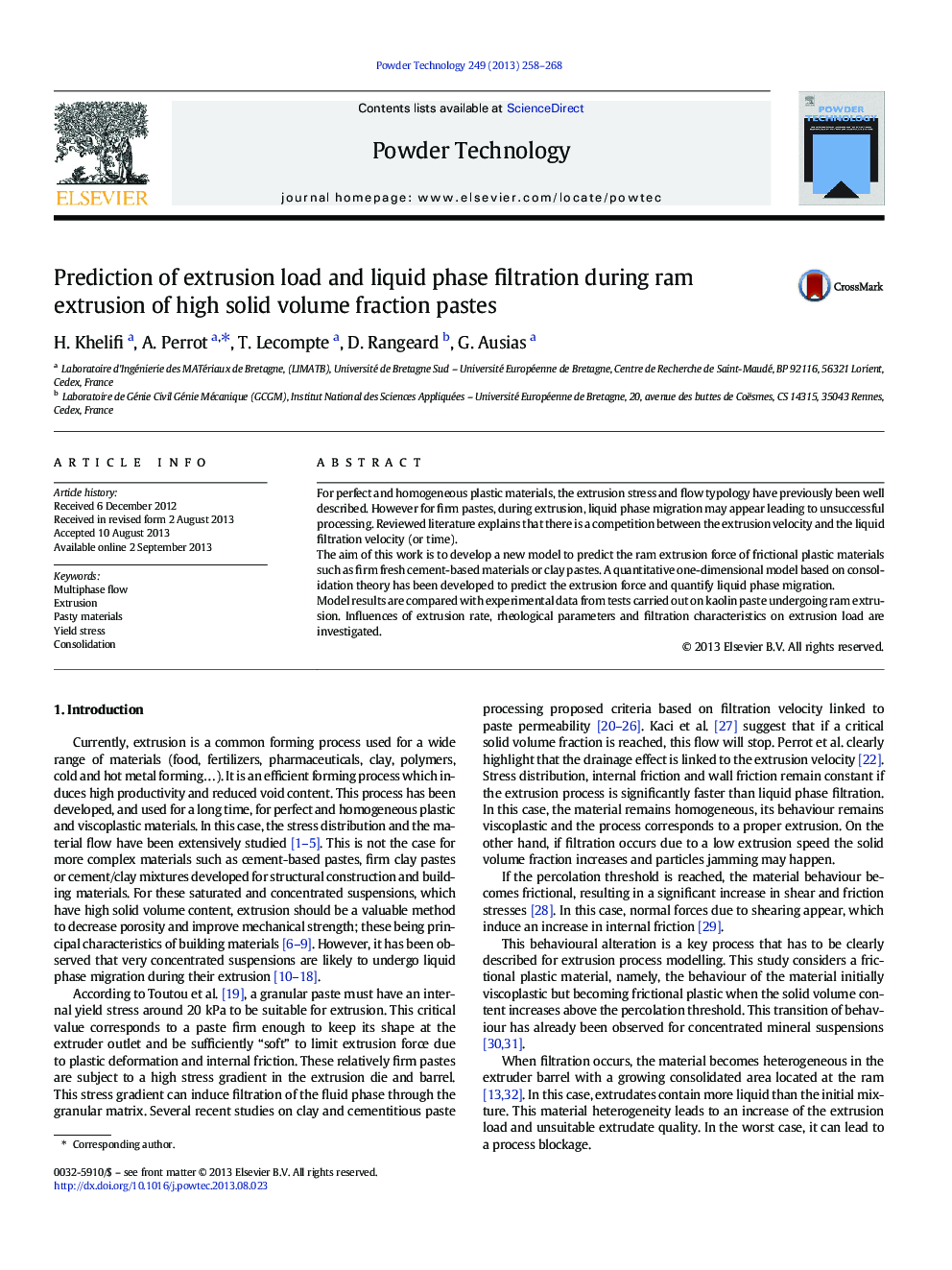| Article ID | Journal | Published Year | Pages | File Type |
|---|---|---|---|---|
| 236341 | Powder Technology | 2013 | 11 Pages |
•Modelling the ram extrusion load of a firm paste undergoing drainage•Establishing a continuous transition from plastic to frictional plastic behaviour•Use of the consolidation theory to estimate the drainage rate•The modelling fits experimental tests performed on kaolin paste.
For perfect and homogeneous plastic materials, the extrusion stress and flow typology have previously been well described. However for firm pastes, during extrusion, liquid phase migration may appear leading to unsuccessful processing. Reviewed literature explains that there is a competition between the extrusion velocity and the liquid filtration velocity (or time).The aim of this work is to develop a new model to predict the ram extrusion force of frictional plastic materials such as firm fresh cement-based materials or clay pastes. A quantitative one-dimensional model based on consolidation theory has been developed to predict the extrusion force and quantify liquid phase migration.Model results are compared with experimental data from tests carried out on kaolin paste undergoing ram extrusion. Influences of extrusion rate, rheological parameters and filtration characteristics on extrusion load are investigated.
Graphical abstractFigure optionsDownload full-size imageDownload as PowerPoint slide
